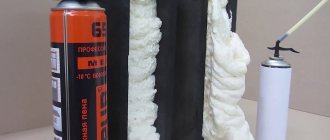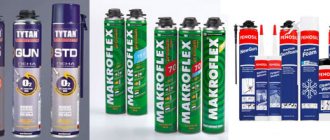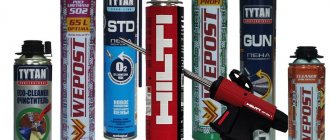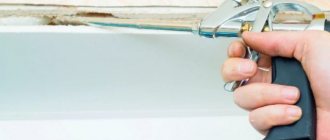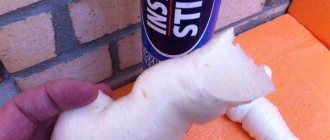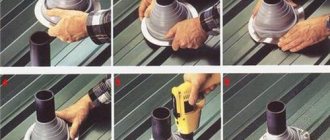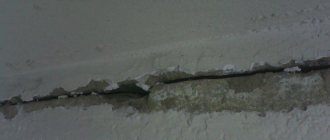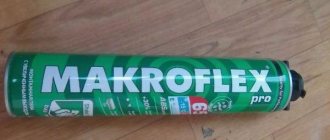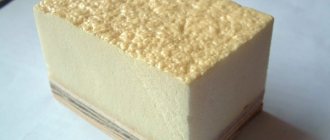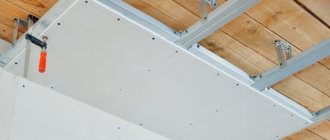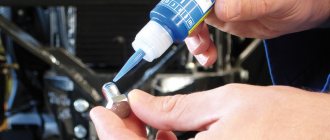Today, no construction can be completed without the use of polyurethane foam. Since its appearance in the 70s. XX century in the construction market of the first can of foamed polyurethane prepolymer, waterproof polyurethane foam for sealing joints completely changed the approach to installation.
Types of polyurethane foam
Throughout the entire period of use of polyurethane foam, manufacturers have improved its composition, producing universal or highly specialized mixtures in which certain properties are enhanced. Therefore, the modern construction market is replete with different types of polyurethane-based installation sealants, which are not so easy for the average person to understand. The quality of installation work or the quality of sealing seams depends on the correct choice of the type of polyurethane foam.
What is polyurethane foam
The use of polyurethane foams is based on the chemical reaction of polymerization of macromolecules (prepolymers). The elementary polymerization reaction occurs during the reaction of polyesters and isocyanates, when the mixture hardens (polymerizes) within 5 minutes. If there is an excess of one component, the polymerization reaction slows down and stops. When the mixture comes into contact with water, the reaction resumes and the polymer chains of the polyurethane lengthen until it hardens completely.
Classic one-component polyurethane foam is a mixture in one container of excess polyesters with isocyanates, as a result of the reaction between which prepolymer macromolecules are formed. Under the influence of injected aerosol gases, prepolymers rush out after opening the valve and react with atmospheric water molecules. As a result, the foamed prepolymers harden. This releases carbon dioxide, which forms a porous structure of the material.
Household use
Kinds
Polyurethane foam is a thick prepolymer based on durable polyurethane foam. Under high pressure, the mass is placed in a metal container with a dispenser. The main reaction occurs upon contact with air: the sealant particles instantly expand and take the shape required by the builder, increasing in volume several times at once. Working with this material is not difficult, and the fast hardening process allows you to avoid delaying the installation of the object for several days.
Conventionally, all types of foam can be divided into household and professional. The first is characterized by a small package size and has simple and universal characteristics. The container is immediately equipped with a spray nozzle. Series for use by master builders are produced for a mounting gun - a small device that allows you to penetrate narrow holes and better control the volume of foam. It is simply irreplaceable when installing a window unit, assembling a balcony or other complex work.
The main types of polyurethane foam that are produced on the building materials market:
- summer, suitable for working in warm conditions from May to October;
- low-temperature, intended for installation in winter;
- all-season or universal, the operating temperature of which ranges from -10° to +50°C.
If installation or construction is to be carried out at a site with a high fire hazard, experts recommend using high-temperature foam. It is developed from high-quality polymers that do not burn even in an open flame. This allows you to contain the flow of air in case of fire and ensures the stability of any structure. This material can be used in schools, shopping centers and hospitals, and to insulate saunas.
Types of mounting foams
Depending on the state of the components inside the can, there are two types of ready-to-use polymer-based mounting compounds:
- One-component. This type is characterized by ease of use, slow hardening, and the ability to reuse an incompletely used container. The shelf life is limited, since the polymerization reaction occurs inside the cylinder from the moment it is filled at the enterprise.
- Two-component. In these cans, polyesters and isocyanates are contained in two separate reservoirs inside the aerosol container and are mixed just before leaving the can. They are characterized by a high polymerization rate. There is no need for the presence of water, but after opening the container you will have to use the contents within 5-10 minutes, depending on the air temperature. The shelf life is theoretically unlimited.
Manufacturers
The construction market is rich in a variety of sealants, but this does not mean that all of them meet quality requirements. Often, stores receive foams that have not been certified and do not meet the necessary requirements. Some manufacturers do not fill the container completely, or instead of gas they use volatile components that are harmful to the atmosphere.
Soudal (“Arctic”) is considered the most popular manufacturer of winter types of sealants.
The product has the following characteristics:
- temperature of use – above -25ºС;
- foam yield at -25ºС – 30 liters;
- exposure time at -25ºС – 12 hours;
- foam heating temperature – no more than 50ºС.
Another equally well-known manufacturer of building materials is.
The product has the following properties:
- temperature of use – above -10ºС;
- polyurethane base;
- dimensional stability;
- exposure duration – 10 hours;
- foam yield at -10ºС – 25 liters;
- noise insulation properties.
For information on the rules for using polyurethane foam at sub-zero temperatures, see the following video.
What characteristics are taken into account in the work
Professionals use large volumes of mounting sealant in their work, so spray gun cans for professional work allow you to accurately dose the foam output onto the work surface. This is how they differ from conventional cans with a polyethylene tube for household use.
Professional packaging
In addition to prepolymers and aerosol gases (propellants), there are additives inside the can that regulate the size of bubbles and their number, the ratio of opened and intact bubbles in the foam, the degree of adhesion to the surface, accelerators or retarders of the polymerization reaction. Their combinations radically affect the properties of the foam, among which the following are important:
- output volume;
- primary and secondary expansion;
- density and porosity;
- fire resistance;
- moisture resistance;
- drying rate, initial formation of surface film;
- operating temperature range.
The quality of polyurethane foam is determined by the balance between the number of bubbles formed, their calibration, diameter and the ratio of open and closed cavities inside the structure formed after hardening.
Homogeneous structure is a sign of quality
